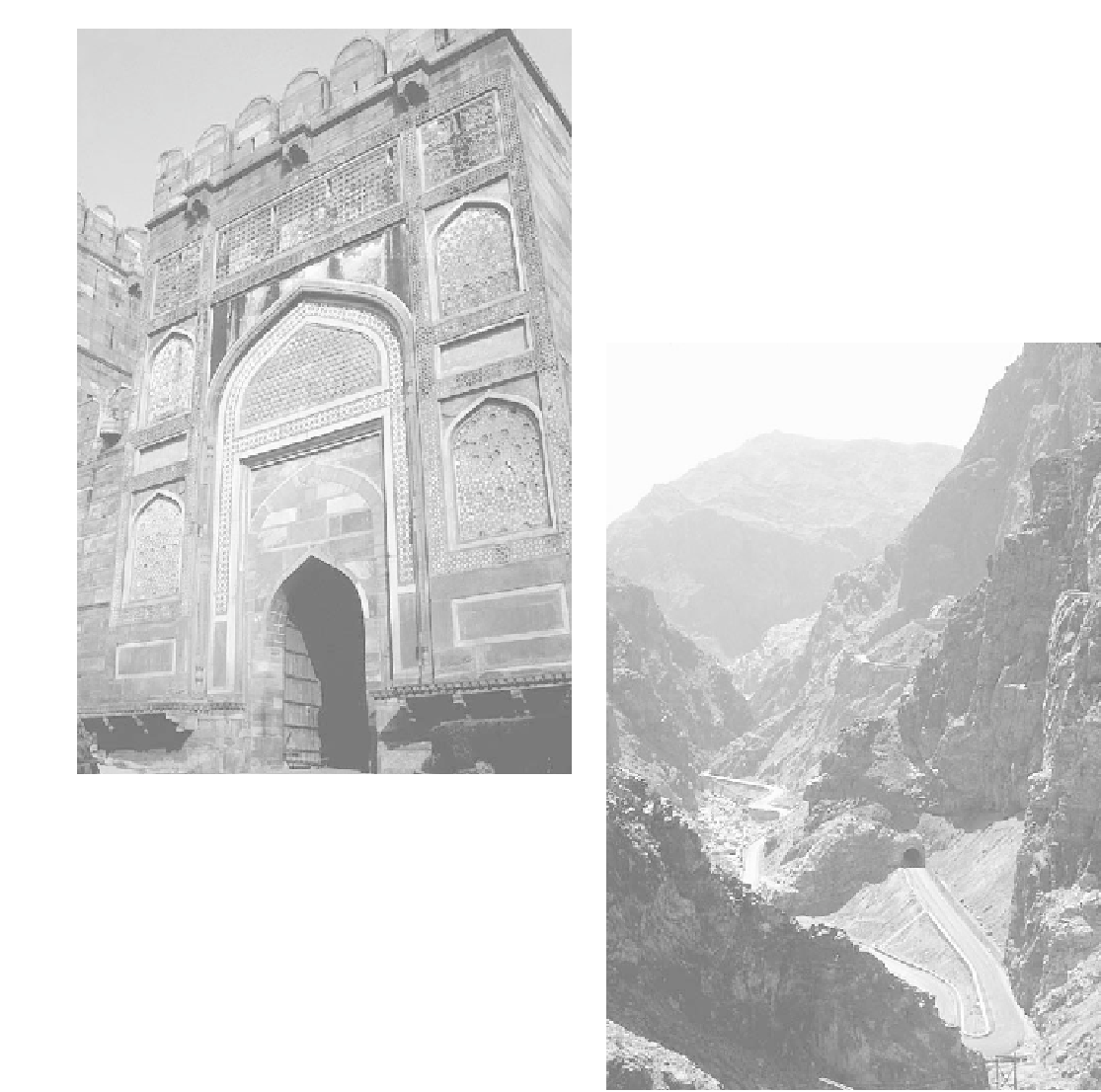Geography Reference
In-Depth Information
rulers chose Delhi as their capital because of its strategic
situation. Delhi guards the western gateway into the
Doab
(two rivers), the level and fertile land between the Ganges
and its main tributary , the Yamuna (Figure 6-2). Much of
India' s history concerns mountain passes, especially those
in the Hindu Kush. The Khyber is one of the most fought-
over passes in the world (Figure 6-3).
With slow and difficult travel, overextension could
easily lead to territorial losses. The Deccan, for exam-
ple, was a difficult region to conquer and keep, and it
typically was subdivided among several rulers. Many an
Figure 6-2
This is the Red Fort in Agra, India. Built by the Mughal
Emperor , Akbar , between 1565 and 1573, its red sandstone
exhibits Indo-Islamic architecture. It stands guard over the
Y amuna River .
Photograph courtesy of B. A. Weightman.
achievements, the British Empire was unheard of be-
cause it did not exist. A venture into South Asia' s intrigu-
ing past is surely worth pursuing.
Geography plays a vital role in history; space and
time are twisted together like a two-colored rope. Moun-
tains, such as the Himalaya and the Hindu Kush, and
deserts such as the Thar (Great Indian), marked defensive
frontiers. In the days when territory was traversed on foot
or by animal, terrain conditions could serve as barriers or
at least make distances impractical to cross. Control over
strategic sites such as river fords and mountain passes
could make or break empires. For instance, a dozen or so
Figure 6-3
Here is the Pakistan side of the Khyber Pass. The road was built
by the American Corps of Engineers. Note the hairpin turns,
switchbacks, and tunnels. I remember traveling this route in a
Russian car with a Pakistani driver who careened the road, usu-
ally on the wrong side, with his hand constantly on the horn. W e
had several near misses with huge trucks headed for Afghanistan.
Photograph courtesy of B. A. Weightman.

















Search WWH ::

Custom Search